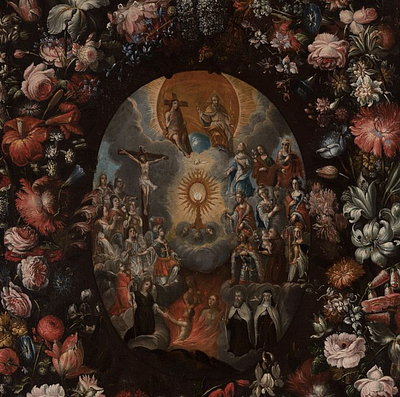Flemish school of the mid-seventeenth century. "Saint Elizabeth and Saint John". Oil on copper.
Lot 13
About Seller
Setdart Auction House
Carrer Aragó 346
Barcelona
Spain
Setdart Subastas was born in 2004 and is currently the first online art auction in Spain with solidity, prestige and reliability guaranteed by our more than 60,000 users. Setdart has a young, dynamic and enterprising team ready to successfully manage the purchase and sale of art works through custom...Read more
Estimate:
EUR€800 - EUR€1,000
$860.22 - $1,075.27
Absentee vs Live bid
Two ways to bid:
- Leave a max absentee bid and the platform will bid on your behalf up to your maximum bid during the live auction.
- Bid live during the auction and your bids will be submitted real-time to the auctioneer.
Bid Increments
| Price | Bid Increment |
|---|---|
| EUR€0 | EUR€10 |
| EUR€200 | EUR€25 |
| EUR€500 | EUR€50 |
| EUR€1,000 | EUR€100 |
| EUR€3,000 | EUR€200 |
| EUR€5,000 | EUR€500 |
| EUR€10,000 | EUR€1,000 |
| EUR€20,000 | EUR€2,000 |
| EUR€50,000 | EUR€5,000 |
About Auction
By Setdart Auction House
Jul 14, 2021
Set Reminder
2021-07-14 06:30:00
2021-07-14 06:30:00
America/New_York
Bidsquare
Bidsquare : OLD MASTERS
https://www.bidsquare.com/auctions/setdart-auction-house/old-masters-7202
Setdart Auction House sofia@setdart.com
Setdart Auction House sofia@setdart.com
- Lot Description
Flemish school of the mid-seventeenth century. "Saint Elizabeth and Saint John". Oil on copper. Size: 16 x 22 cm; 28,5 x 34,5 cm (frame). This work follows a recurring iconography in European art during the sixteenth and seventeenth centuries: it presents St. John the Baptist in a landscape setting, dressed in a red cloak, accompanied in this case by St. Elizabeth, his mother. The scene is approached with a clear interest in the landscape, which opens up in clarity as we advance in the depth of the shots. The Gospels say of John the Baptist that he was the son of the priest Zechariah and Elizabeth, cousin of the Virgin Mary. He retired very young to the desert of Judea to lead an ascetic life and preach penance, and recognized in Jesus, who was baptized by him, the Messiah announced by the prophets. A year after the baptism of Christ, in the year 29, John was arrested and imprisoned by the tetrarch of Galilee Herod Antipas, whose marriage with Herodias, his niece and sister-in-law, he had dared to censure. Finally St. John was beheaded, and his head given to Salome as a reward for his beautiful dances. This saint appears in Christian art with two different aspects: as a child, a playmate of Jesus, and as an adult, an ascetic preacher. The adult St. John that we see here appears dressed in oriental art with a camel skin sackcloth, which in the West was replaced with a sheepskin that leaves his arms, legs and part of his torso bare. The red cloak he wears at times, as well as in the scene of his intercession at the Last Judgment, alludes to his martyrdom. In Byzantine art he is depicted as a large-winged angel, with his severed head on a tray which he holds in his hands. However, his attributes in Western art are very different. The most frequent is a lamb, which alludes to Jesus Christ, and he often carries a cross of reeds with a phylactery with the inscription "Ecce Agnus Dei".
- Shipping Info
-
In-house shipping available. Please inquire at admin@setdart.com.
-
- Buyer's Premium



 EUR
EUR CAD
CAD AUD
AUD GBP
GBP MXN
MXN HKD
HKD CNY
CNY MYR
MYR SEK
SEK SGD
SGD CHF
CHF THB
THB















